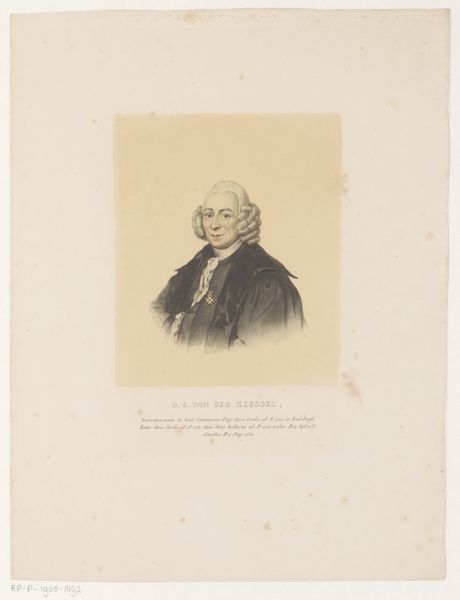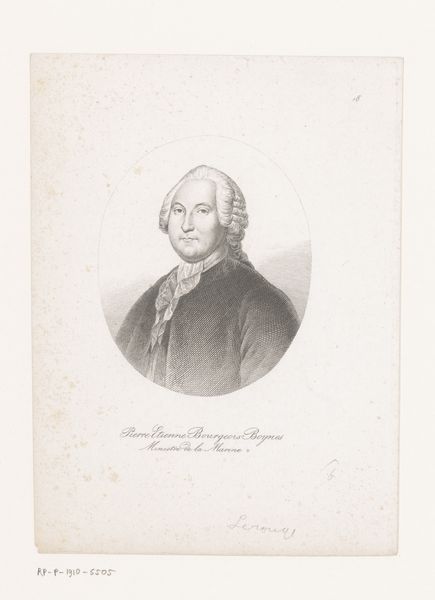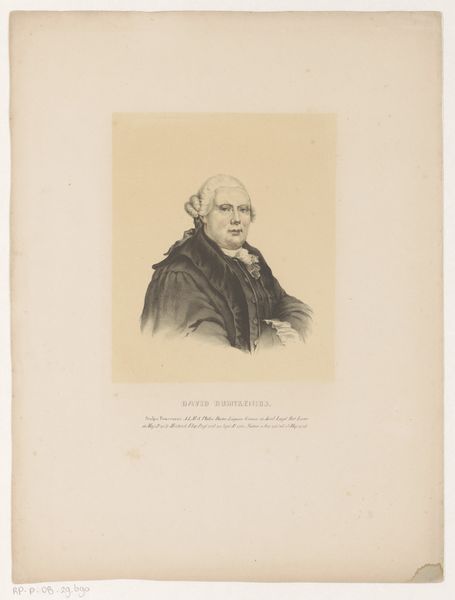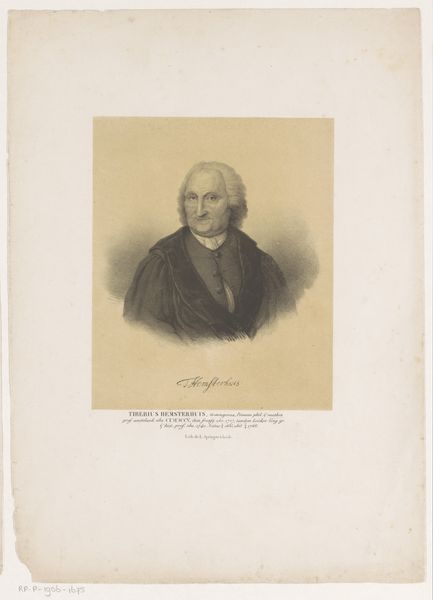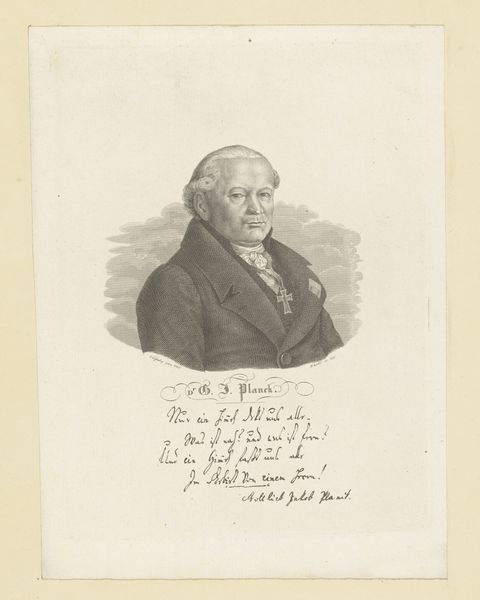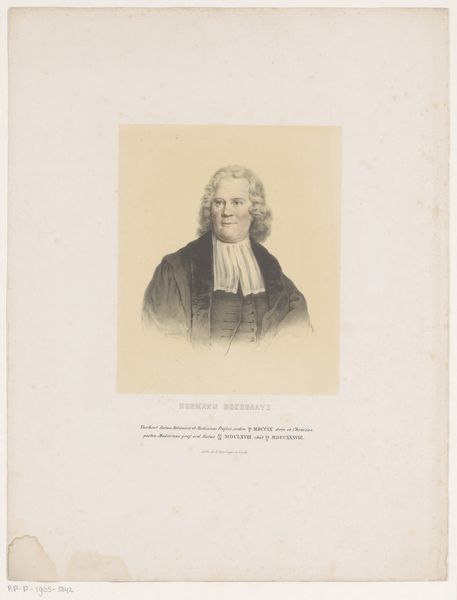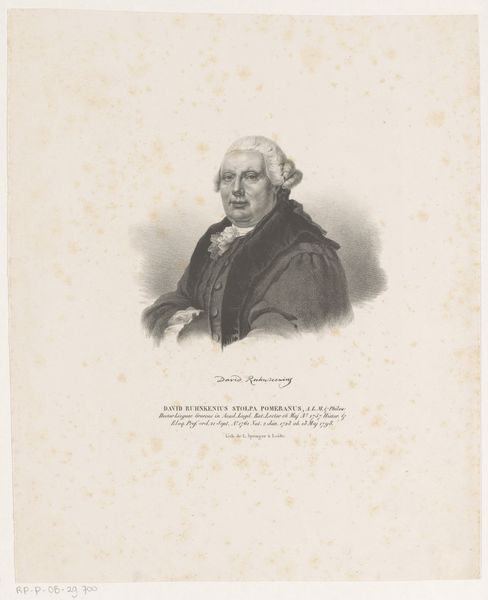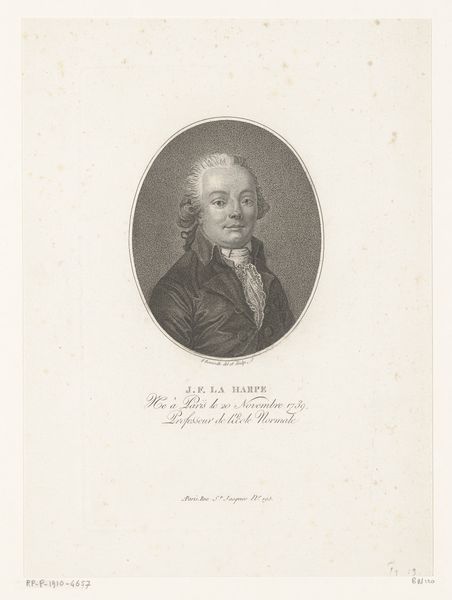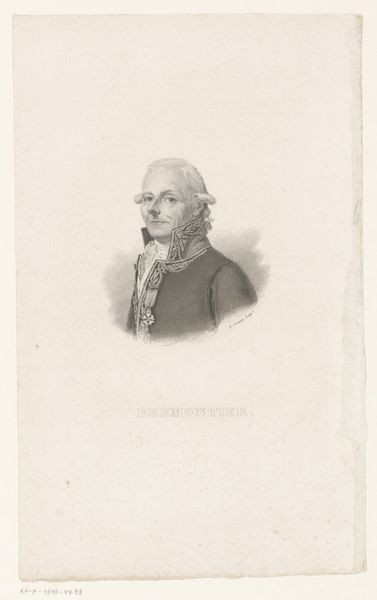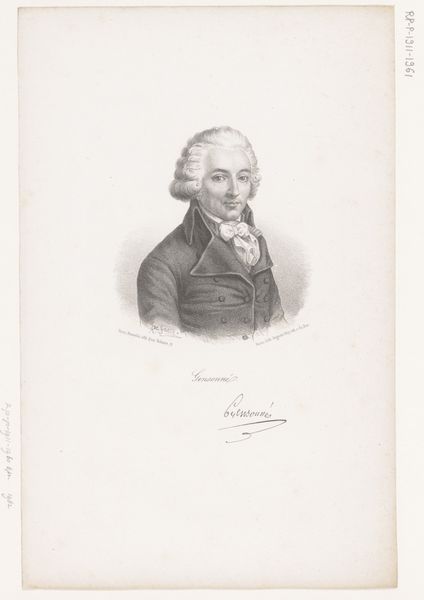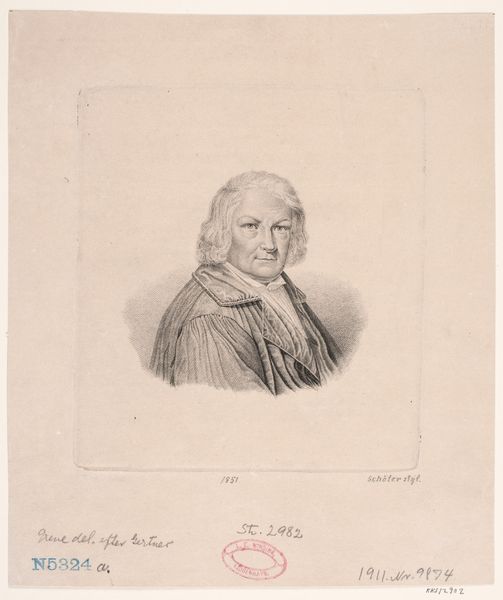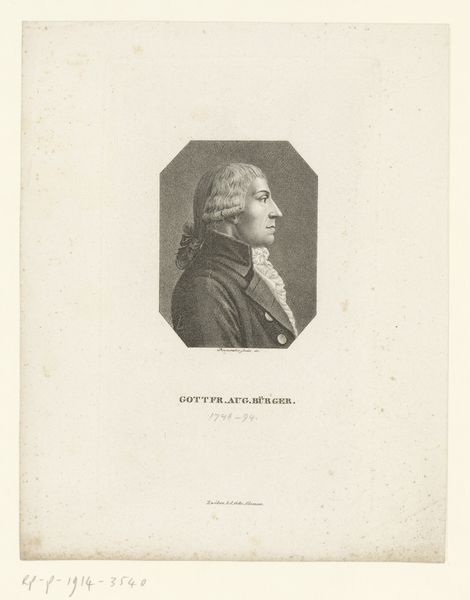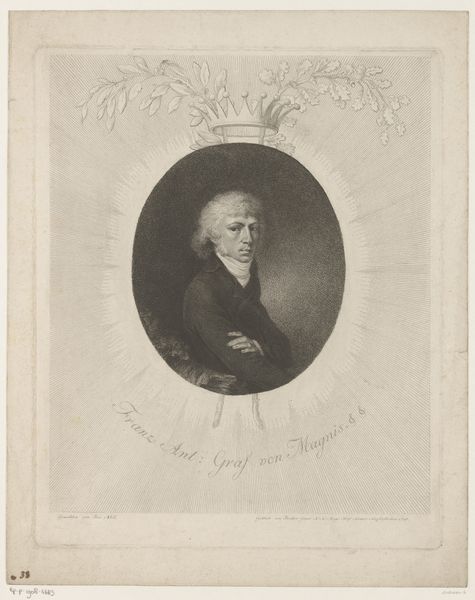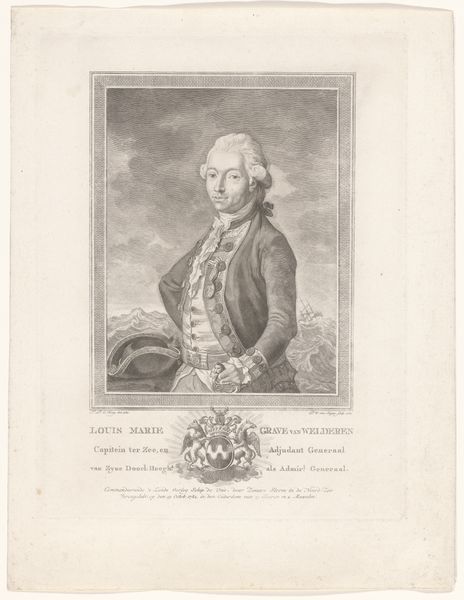
drawing, pencil
#
drawing
#
pencil sketch
#
pencil drawing
#
pencil
#
academic-art
#
realism
Dimensions: height 424 mm, width 340 mm
Copyright: Rijks Museum: Open Domain
Curator: Let’s take a look at this work, "Portret van Nicolaas van Lookeren" created by Pieter Gerardus Bernhard in 1834. It's a pencil drawing, quite detailed for its medium, residing here at the Rijksmuseum. What's your initial reaction? Editor: It has an austere yet accessible presence, almost inviting. The delicate hatching gives the subject an intimate, thoughtful air. I can’t help but notice how the inscription below actually becomes part of the work’s impact. It contextualizes the portrait almost like an academic study or some form of calling card. Curator: Indeed. This academic style in a drawing underlines how knowledge, skill, and labor are inscribed within its production. Think about the artisanal knowledge required for blending pencils, selecting paper with the right texture, and the techniques to translate a likeness. It collapses what’s deemed ‘high’ and ‘low’ within the artistic process, a subtle rebellion against class boundaries, even. Editor: Absolutely. Considering Lookeren was a medical doctor, it makes me consider who had the privilege to be represented, and how societal status shaped visibility then, particularly in relation to profession and societal power. The act of memorialization and representation raises many complex intersectional questions. Curator: And how materials like pencil, accessible even then, were transforming the possibilities of portraiture. Graphite as a medium connects to the expanding reach of art creation itself, moving from exclusive aristocratic materials. We might consider the implications on visual culture. Editor: It reminds us that visual representation itself, and who gets to participate in it, isn't a neutral act. These drawings reflected and enforced certain societal values of gender and class. Curator: By tracing those very strokes and acknowledging them, hopefully, we see the past, but also see where we might break the outlines of expectation now, wouldn’t you agree? Editor: Precisely. Questioning the visual lexicon is fundamental in forging inclusive visual narratives today. It calls upon us to rethink access and agency.
Comments
No comments
Be the first to comment and join the conversation on the ultimate creative platform.
